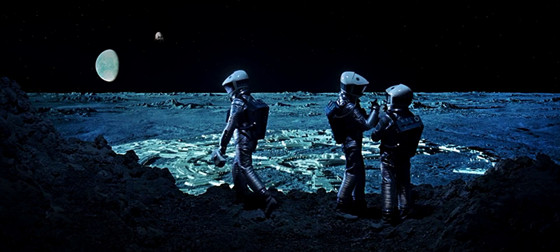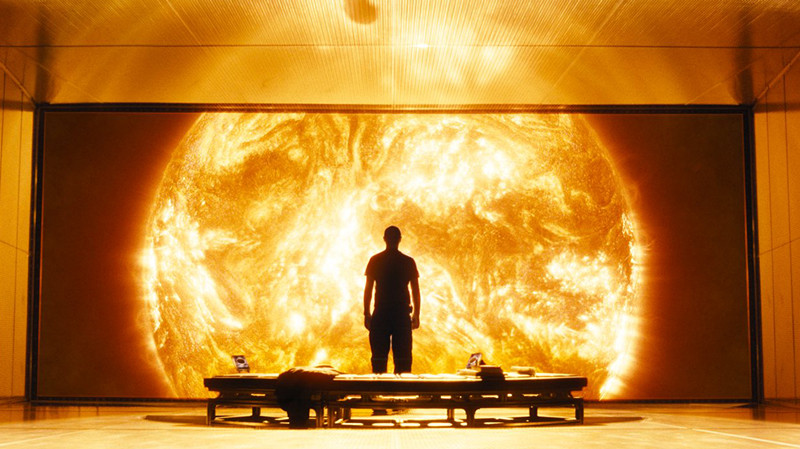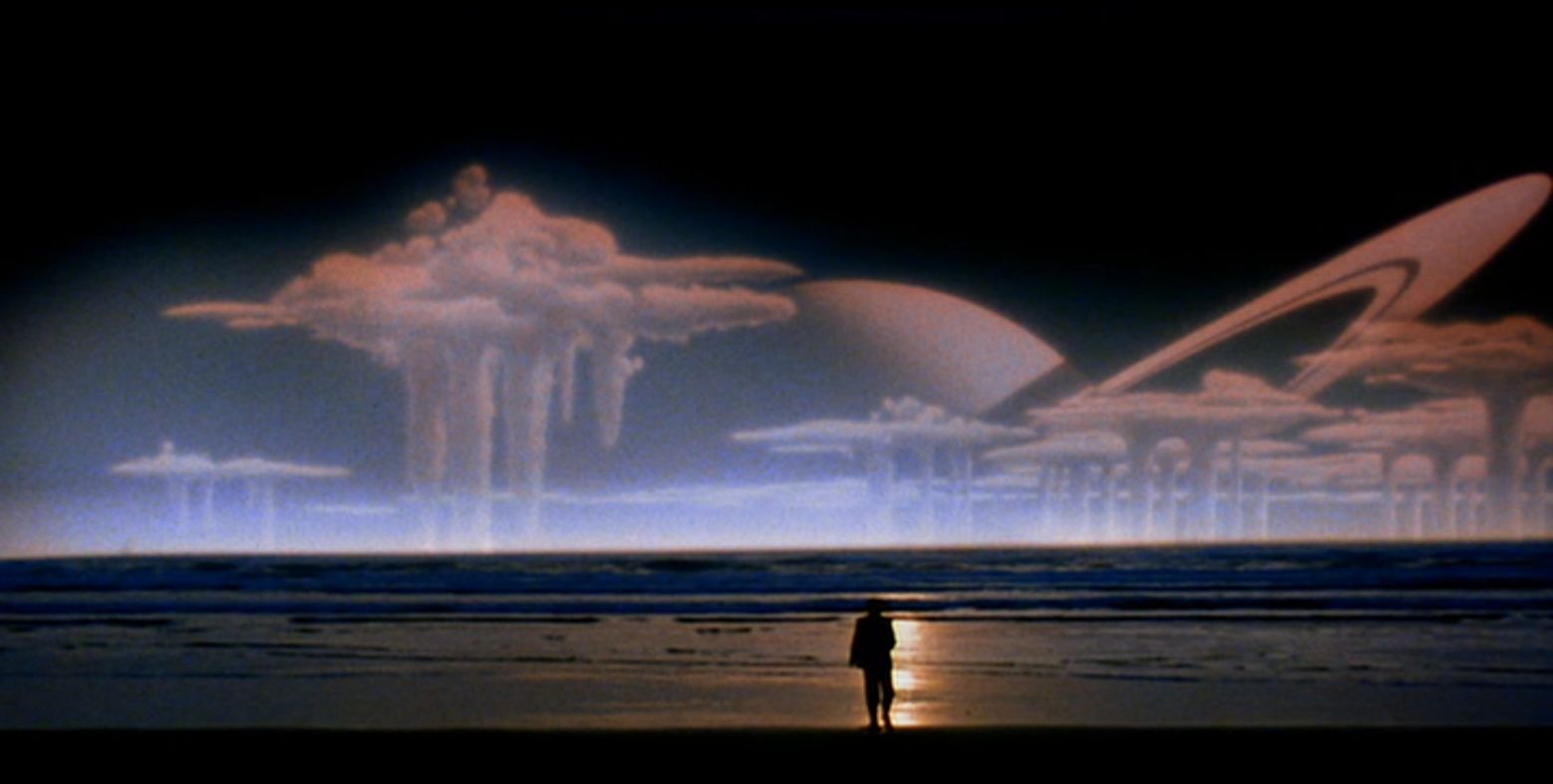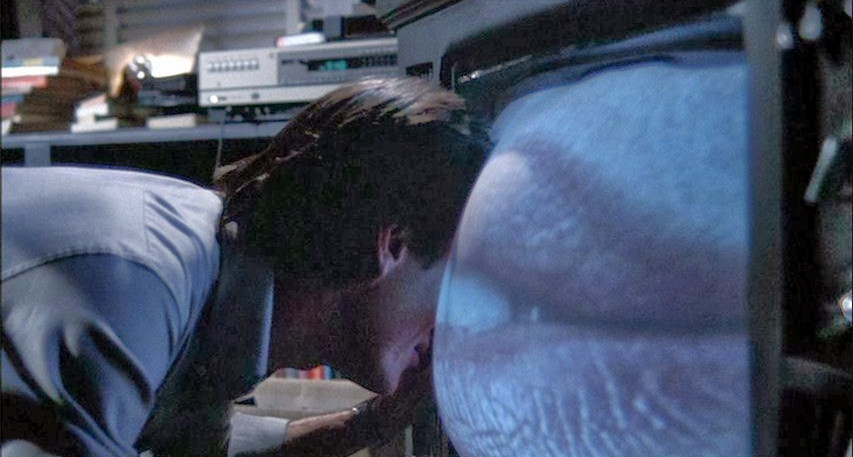
For those who have been fans of Alex Garland’s written work and his cinematic directorial debut “Ex Machina,” “Annihilation” was eagerly anticipated. “Annihilation” was based on Jeff VanderMeer’s original novel of the same name, which was also the first part of a cerebral and mysterious trilogy known as “The Southern Reach.” Reading the original novel, it became clear that adapting it wasn’t going to be easy and when the trailer eventually came out, it diverted a lot from the source material.
Many feared that the finished film was compromised by the studio, as reports leaked out about how the main financier was worried that the film was ”too intellectual.” The film was originally supposed to be distributed by Paramount, but had then been sold to Netflix after poor test screenings.
Only those who lived in either the United States, Canada or China had the virtue of seeing this splendorous film in theaters, while the rest of Europe and the UK had to be content with streaming it via Netflix.
One apparent difference from the novel and the trailer was its emphasis on monster horror. Though there were hints of monster action in the novel, it was mostly kept to the reader’s imagination as the main character – named ‘the biologist’ in the book – would find the gory remains of numerous victims instead of witnessing actual slaughter. In the trailer, we already saw a strange bearlike organism attack the main characters. This could have been perceived as a studio mandate – stripping down the film’s intellectualism and bulking up conventional horror beats.
It turns out that we had nothing to fear. Garland won the final cut and “Annihilation” is his complete vision. In a strange twist, the changes to the novel worked, not just because they translate better to the medium of cinema, but because Garland actually managed to expand on the novel’s themes.
The theme of “Annihilation” is expanded upon, not just in a biological sense but in a psychological sense – in humanity’s innate ability for self-destruction after a tragedy or when confronted by existential alienation. The secondary characters receive greater development and characterization.
The biological weirdness of the novel is upped by Garland’s stellar imagination. And since the novel is part of a trilogy, the movie has a decisive conclusion – and is actually much more satisfying than the ending of the third book.
It’s simply better than the book. It’s disturbing, beautiful, and terrifying. It’s what we should want from modern films. Unfortunately, the fear that the film wouldn’t be successful at theaters was proven right after the poor box office results in the countries that actually aired this in theaters. As usual, human beings just don’t know what’s good for them.
In this list I have comprised 10 films you should watch if you enjoyed “Annihilation.” All of these feature either the body horror, psychological depth, or cerebral science fiction that was so perfectly mixed in “Annihilation.” Enjoy.
10. Alien

Like Ridley Scott’s original 1979 classic, “Annihilation” is essentially about confronting an alien menace. But while the main characters of “Annihilation” are scientists who seek to understand ‘the Shimmer’ and the weird mutations happening in its spherical dome, the characters of “Alien” are blue-collar workers who just want to make it home alive – aside from one, but I won’t spoil that twist.
Both the alien and the Shimmer represent something more than its alien form. H.R. Giger’s alien creatures called the Xenomorphs would come to represent rape, the forceful violation of the body. The Shimmer would represent cancer, because just like a tumor, it keeps expanding inside its host, dividing and mutating the cells within; in the case of the Shimmer, the host is Earth and everything that either lives or remains in its domain of influence.
The main difference between the Xenomorph and the Shimmer is that we can actually understand what drives the alien. Just like any other animal on earth, it just wants to eat and further his lineage. The Shimmer might even be scarier in the sense that its true existence and goals remain unexplained. And it might not even have a goal. When you die horrifically at the hands of an alien, you understand why. But when you have become a victim of the Shimmer and you suffer from a terrible mutation – there might even be evidence that one’s consciousness drifts inside the Shimmer – you don’t know why.
Just like with the Xenomorphs, there’s no way to communicate with the Shimmer. We can’t reason with it. It’s just doing what it’s programmed to do. It’s something we might never really understand. It’s not human. It’s something else. The universe doesn’t revolve around us. And our lives and all the things we hold dear means nothing to the Shimmer.
Aside from the thematic comparisons between “Alien” and “Annihilation” – and their one-word titles – “Annihilation” owes its debt to “Alien.” “Annihilation” might become known as one of the great science fiction horror films, but the greatness, as we all know, started with “Alien.”
9. 2001: A Space Odyssey

“My God, it’s full of stars,” states astronaut Bowman as he delves into the unknown realm of space in “2001: A Space Odyssey” – a line that was cut from the final film but can be found in the original novelization.
Science fiction buffs will undoubtedly be reminded of this during the final confrontation between Natalie Portman’s character and the core of the Shimmer. Just like Bowman, all she can do is stare at this strange and mesmerizing entity and try to comprehend what is happening. You are essentially watching a human being trying to understand something that cannot be understood in human terms.
It’s this theme of the unknown that connects “2001” with “Annihilation” the most. The alien entity of “2001” is never truly seen, but its presence is felt. In “2001,” there are hints that the alien entity furthered mankind’s evolution so that it became the smartest mammal on the globe, and at the end, we see a glimpse of a smarter, more peaceful creature. In “Annihilation,” the alien entity uses human DNA in order to create its own singular biological creature.
The aliens in “2001” care about the prospect of an evolved human species – not just in its power but in its empathic abilities – but the alien in “Annihilation” doesn’t have that conscience.
At the end of “Annihilation,” we see a new lifeform – a mixture of human DNA and the Shimmer. Perhaps this new lifeform will slowly envelop humanity until the homosapien seizes to be the most dominating animal on earth. It was bound to happen eventually.
8. Sunshine

“Sunshine” is a beautiful amalgamation of other science fiction works – we see hints of “2001: A Space Odyssey,” “Solaris,” “Alien” and more – that also stands perfectly well on its own. This is mostly due to Danny Boyle’s moody directing with its use of visuals and sweeping music.
The film details the second expedition of a crew of astronauts as they travel to the dying sun, hoping to ignite it with a nuclear bomb. Along the way, things start to go wrong: a miscalculation nearly sabotages the whole mission, the isolating environment causes friction among the crew, and the psychological pressure of having the fate of humanity in your hands leads to suicidal depression.
Most terrifying of all, the closer they come to the sun, the more they feel its mysterious power, and those who become too infatuated by it begin to have religious visions and bouts of psychotic madness.
Gorgeous to look at, mercilessly suspenseful, and the intelligent script by Garland himself makes this a must-see film and one of the finest science fiction films in recent decades.
7. The Quiet Earth

“The Quiet Earth” might be the most confounding entry of this list. It’s a weird and sometimes goofy film that many will either love or hate. The first viewing wasn’t easy. It’s particularly low-budget, has some dated qualities, and feels rather aimless in the first half.
The film opens with Zac Hobson (Bruno Lawrence) waking up completely nude in his bed, evoking a scene from Garland’s script for “28 Days Later.” When he goes outside, he finds wreckages of cars, raging fires, with all signs pointing to some cataclysmic event – but there’s not a body in sight. After some investigation, he discovers that he might be the last man on earth.
The first half, though rather aimless at first, is admittedly also the most entertaining. Zac starts to lose his mind, begins talking to cardboard cutouts of famous people (particularly Hitler), and proclaims himself God. Some semblance of a plot returns when he discovers that might not be the last man on earth after all.
There’s some hard science fiction in the base of this movie and its highest acclaim might come from Neil deGrasse Tyson who considers this one of his favorite science fiction movies. Like most films on this list, it’s about human beings trying to deal with the inexplicable and the toll this can have on the mind.
It’s also fun imagining what you would do if you were the last person on earth. Some part of you might enjoy the isolation and the freedom, but another part of you might realize how lonely and ultimately depressing life would be without the company of others.
The final scene of the film is mysterious and deeply confusing, though the arc of Hobson’s character ends on a heartfelt note.
6. Videodrome

There’s some particularly nasty body horror in “Annihilation,” with intestines moving around someone’s gut like eels and hybridized animals (and even plants) traversing the Shimmer. But I’ll admit, some of the CGI did look rather dodgy in “Annihilation.”
The moving guts inside the guy’s stomach looked good, but you wish it was done with practical effects. And if there’s one filmmaker who is an expert in practical body horror effects, it’s the great David Cronenberg. And if there’s one movie that proves this, it’s “Videodrome.”
Just like “Annihilation,” in “Videodrome” we have characters morphing with inanimate objects. In “Annihilation,” we see evidence of some poor sap sharing his DNA with a brick wall. In “Videodrome,” we see a character pushing a videotape inside the main character’s vagina that’s been growing inside his stomach – yes, I’m completely fucking serious.
The idea of our DNA sharing itself with the environment, with inanimate objects or other organisms, is terrifying and it’s this kind of body horror we can see in both “Videodrome” and “Annihilation.” It’s just that when it comes to depicting body horror, you can’t beat the gloriously disgusting practical effects of “Videodrome.”
This doesn’t mean “Videodrome” is only about the body horror. The film has lots to say about humanity’s relationship with technology and how it can influence our perception of reality. And I mean, it also features James Woods shooting someone with a cancer gun. As we all say by the end of this film: death to “Videodrome,” long live the new flesh!